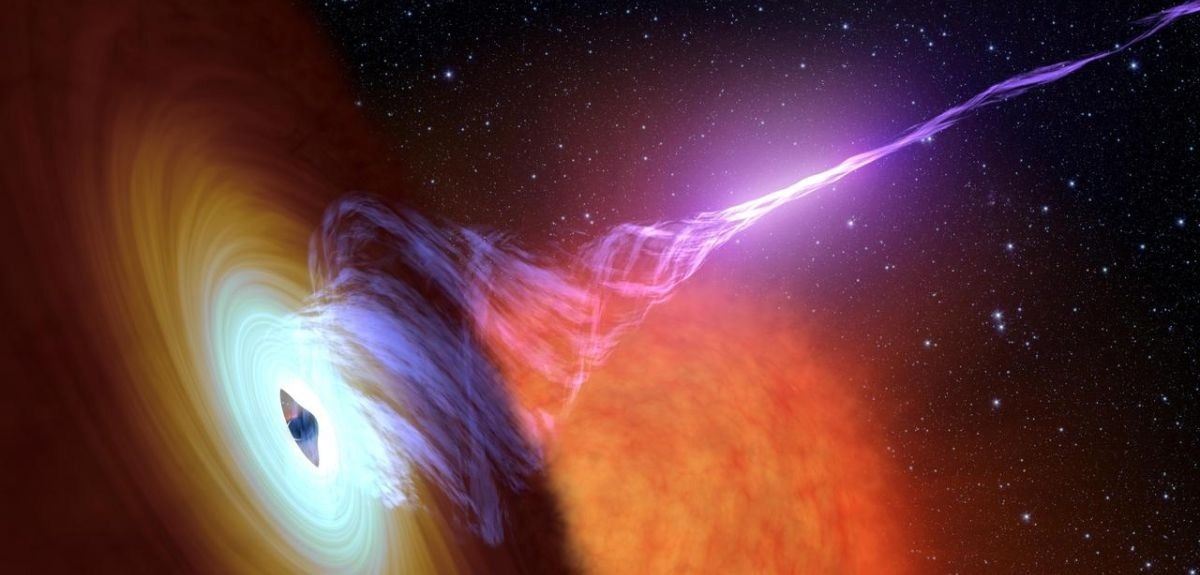Reviewed by Lexie CornerJun 17 2024
A multinational team of scientists, coordinated by the Department of Physics at the University of Oxford, has invented a revolutionary method for producing plasma ‘fireballs’ on Earth, ushering in a new era in laboratory astrophysics. The new findings were published in Nature Communications.
 An international team of scientists, led by the Department of Physics at the University of Oxford, has experimentally generated plasma " fireballs," opening a new frontier in laboratory astrophysics. NASA/JPL-Caltech.
An international team of scientists, led by the Department of Physics at the University of Oxford, has experimentally generated plasma " fireballs," opening a new frontier in laboratory astrophysics. NASA/JPL-Caltech.
The universe’s most compact objects are black holes and neutron stars. Plasmas, the fourth fundamental state of matter, exist with solids, liquids, and gases in these extreme astrophysical conditions.
The high gravity of these compact objects attracts neighboring matter and leads them to emit massive plasma jets composed primarily of pairs of electrons and their antimatter counterparts, positrons. While these jets are frequently seen in space, producing them in a laboratory has proven extremely difficult thus far.
For the first time, an international team of scientists has successfully manufactured high-density plasma beams in the lab, each containing around 10 trillion electron-positron pairs. A significant value indicates that the beam operates as a genuine plasma (with wave-like activity) rather than merely a collection of particles.
According to the researchers, this breakthrough paves the way for future experiments to investigate the powerful processes occurring in gamma-ray bursts (highly energetic bursts of light thought to be caused by catastrophic events in outer space) and outflows from active galactic nuclei (extremely bright regions at the centers of some galaxies powered by supermassive black holes).
The laboratory generation of plasma “fireballs” composed of matter, antimatter, and photons is a research goal at the forefront of high-energy-density science. But the experimental difficulty of producing electron-positron pairs in sufficiently high numbers has, to this point, limited our understanding to purely theoretical studies.
Charles Arrowsmith, Study Lead Author and Graduate Student, Department of Physics, University of Oxford
Arrowsmith added, “This opens up an entirely new frontier in laboratory astrophysics by making it possible to experimentally probe the microphysics of gamma-ray bursts or active galactic nuclei jets.”
The group collaborated with researchers from the Rutherford Appleton Laboratory in Harwell to construct a unique experiment that used the HiRadMat facility at the Super Proton Synchrotron (SPS) accelerator at the European Organization for Nuclear Research (CERN) in Geneva, Switzerland.
The experiment used 300 billion protons from the SPS accelerator to generate a large number of electron-positron pairs. Each proton possessed 440 times more kinetic energy than its typical resting energy.
As a result, when these high-energy protons collided with an atom, they had enough force to tear apart the atom's constituents—quarks and gluons—which then swiftly reassembled to form a cascade of particles that finally transformed into electrons and positrons.
This achievement highlights the importance of both interaction with our colleagues in Physics and collaboration between experimental facilities around the world, especially as they break new ground in accessing increasingly extreme physical regimes.
Gianluca Gregori, Study Lead Investigator and Professor, Department of Physics, University of Oxford
The CERN beam included enough particles to behave like a genuine astrophysical plasma surrounding a black hole.
The team has also devised strategies to change the emittance of pair beams, allowing for a controlled study of plasma interactions in scaled analogs of astrophysical systems.
This brings together researchers from the Department of Physics, which is one of the world’s largest, like Professor Gianluca Gregori and Dr. Archie Bott from Atomic and Laser Physics, Professors Subir Sarkar and Alex Schekochihin from the Rudolf Peierls Centre for Theoretical Physics, and Professor Todd Huffman from Particle Physics.
Gregori added, “Satellite and ground-based telescopes are not able to resolve the smallest details of distant gamma-ray bursts and active galactic nuclei outflows, and so far, we could only rely on numerical simulations. This new approach will now enable us to test the predictions of sophisticated theoretical calculations, for instance, to validate how cosmic fireballs interact with the interstellar plasma that exists between stars.”
In addition to the University of Oxford, the Rutherford Appleton Laboratory, and CERN, this research is being carried out in collaboration with the University of Rochester’s Laboratory for Laser Energetics (LLE), the Atomic Weapons Establishment, the Lawrence Livermore National Laboratory, the Max Planck Institute for Nuclear Physics, the University of Iceland, and Portugal’s Instituto Superior Técnico.
Journal Reference:
Arrowsmith, C. D., et al. (2024) Laboratory realization of relativistic pair-plasma beams. Nature Communications. doi:10.1038/s41467-024-49346-2